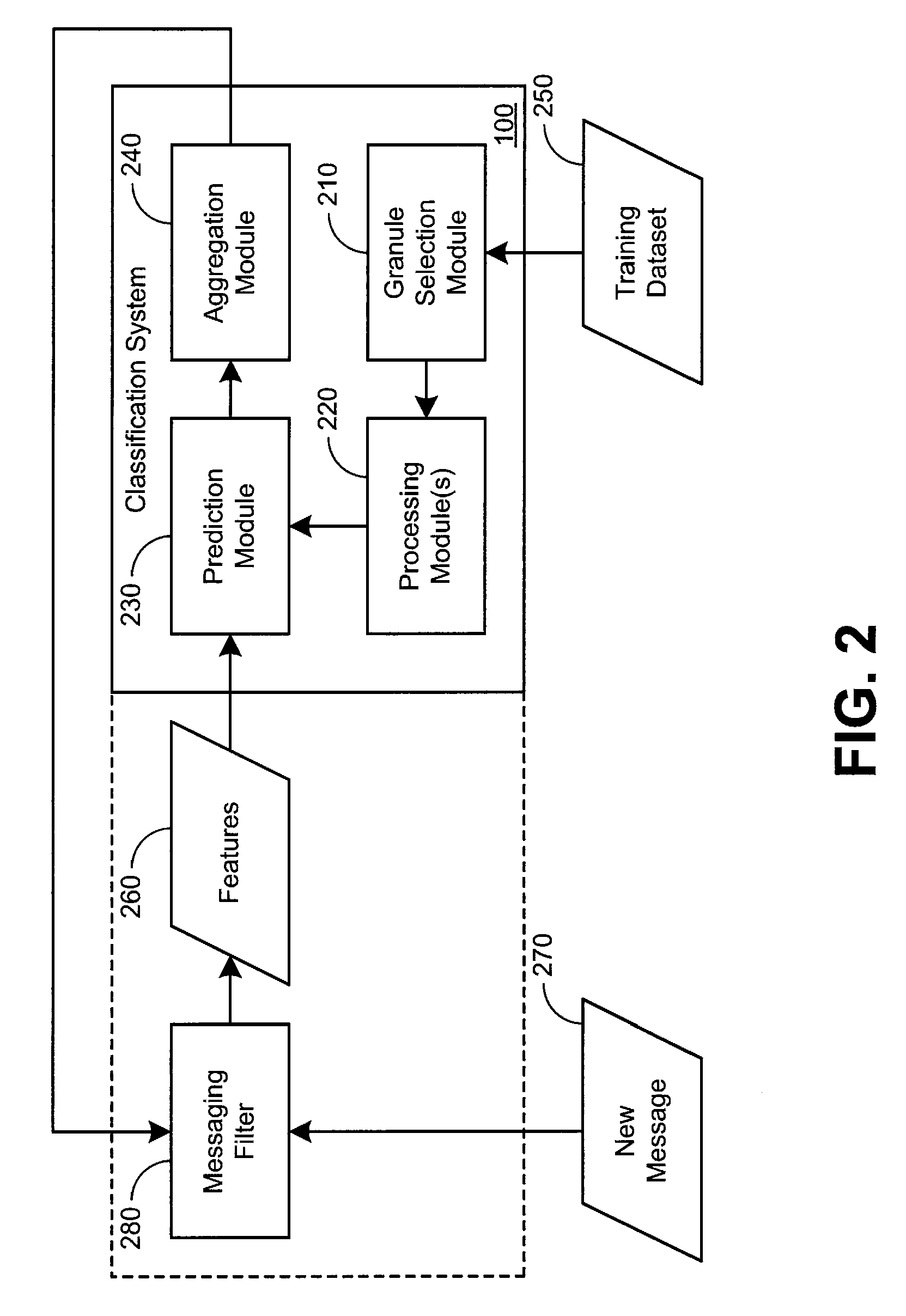Granular support vector machine with random granularity
a support vector machine and random granularity technology, applied in the field of data mining using support vector machines, can solve the problems of large data volume, difficult parsing of decision trees modeled on large amounts of data, and limited classification accuracy
- Summary
- Abstract
- Description
- Claims
- Application Information
AI Technical Summary
Benefits of technology
Problems solved by technology
Method used
Image
Examples
Embodiment Construction
[0015]Granular support vector machines with random granularity can help to provide efficient and accurate classification of many types of data. For example, granular support vector machines can be used in the context of spam classification. Moreover, in some implementations, the granules, typically much smaller than the bootstrapping datasets before random subspace projection, can be distributed across many processors, such that the granules can be processed in parallel. In other implementations, the granules can be distributed based upon spare processing capability at distributed processing modules. The nature of the granules can facilitate distributed processing. The reduction in size of the training dataset can facilitate faster processing of each of the granules. In comparison to “Random Forests”, this granular support vector machine with random granularity works well on large and sparsely populated datasets (e.g., data which contains a lot of zeroes or null sets), because all z...
PUM
 Login to View More
Login to View More Abstract
Description
Claims
Application Information
 Login to View More
Login to View More - R&D
- Intellectual Property
- Life Sciences
- Materials
- Tech Scout
- Unparalleled Data Quality
- Higher Quality Content
- 60% Fewer Hallucinations
Browse by: Latest US Patents, China's latest patents, Technical Efficacy Thesaurus, Application Domain, Technology Topic, Popular Technical Reports.
© 2025 PatSnap. All rights reserved.Legal|Privacy policy|Modern Slavery Act Transparency Statement|Sitemap|About US| Contact US: help@patsnap.com



